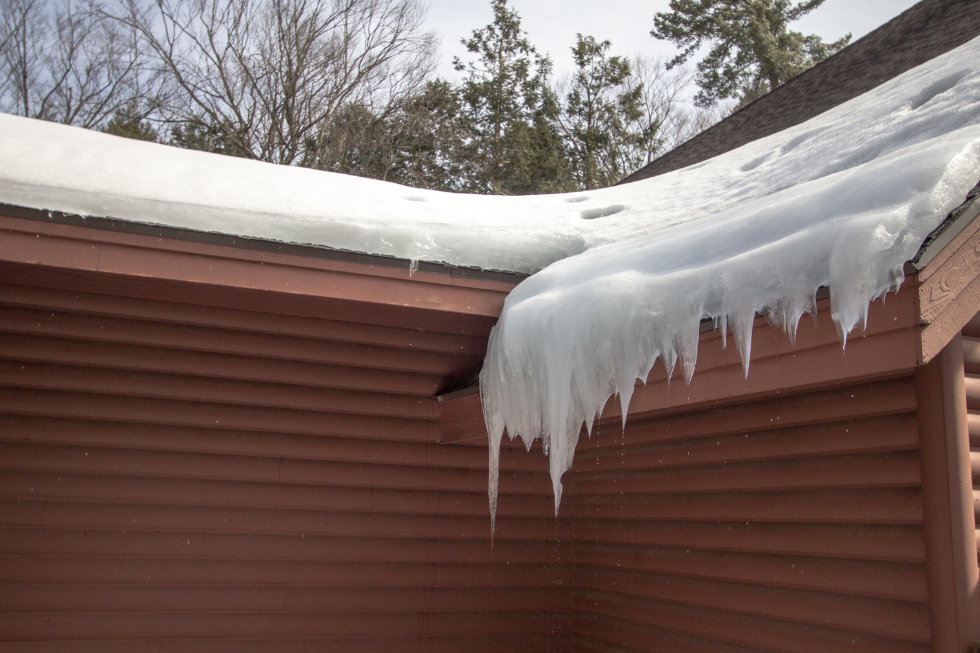Winter brings the beauty of snow-covered landscapes, but for many homeowners, it also brings the headache of ice dams. Ice dams form when melted snow refreezes at the edge of your roof, creating a barrier that prevents water from draining properly. This trapped water can seep under shingles, leading to leaks, water damage, and even structural issues.
Fortunately, preventing ice dams is manageable with the right preparation and maintenance. Here’s everything you need to know to protect your home from ice dams this winter.
What Causes Ice Dams?
Ice dams form due to uneven roof temperatures. When the upper part of your roof is warm enough to melt snow, but the lower edges remain cold, the melted water runs down and refreezes at the colder edge, creating an ice barrier.
Common contributors to ice dams include:
- Poor attic insulation.
- Inadequate ventilation.
- Heat leaks from your home.
- Heavy snowfall combined with fluctuating temperatures.
5 Key Steps to Prevent Ice Dams
- Insulate Your Attic
One of the most effective ways to prevent ice dams is to keep your roof uniformly cold by improving attic insulation. Proper insulation prevents warm air from escaping into the attic, keeping the roof’s surface temperature consistent.
- Add or upgrade insulation to meet recommended levels for your climate zone.
- Focus on sealing gaps around attic access points, chimneys, or vents.
- Ensure Proper Ventilation
Good attic ventilation helps circulate cold air and prevent warm spots on the roof.
- Install ridge and soffit vents to allow for airflow throughout the attic.
- Make sure vents are not blocked by insulation or debris.
- Use fans if necessary to maintain consistent airflow.
- Seal Air Leaks
Warm air leaking into the attic is a major cause of uneven roof temperatures. Sealing these leaks can prevent ice dams from forming.
- Inspect areas around light fixtures, pipes, and attic hatches for gaps.
- Use caulk or expanding foam to seal any openings.
- Check ductwork to ensure it’s properly sealed and insulated.
- Remove Snow Safely
Clearing snow from your roof can minimize the chances of ice dams forming.
- Use a roof rake to remove snow from the edges of your roof after heavy snowfall.
- Avoid climbing onto the roof, as this can be dangerous and may damage shingles.
- Consider hiring a professional if snow accumulation is significant.
- Install Ice and Water Shields
If you live in an area prone to ice dams, installing ice and water shields under your roof shingles can provide an extra layer of protection.
- These barriers prevent water from seeping into your home, even if ice dams form.
- Focus on vulnerable areas, such as roof edges, valleys, and around chimneys or skylights.
Bonus Tips for Ice Dam Prevention
- Add Heated Cables: Heated cables can be installed along the roof’s edge to melt snow and prevent refreezing.
- Check Gutters: Clear gutters of debris before winter to ensure proper drainage.
- Monitor Roof Temperature: Use a roof thermometer to detect uneven heating early.
What to Do If Ice Dams Form
Despite your best efforts, ice dams may still form during extreme weather conditions. If you notice icicles hanging from your roof or water stains on your ceilings, take immediate action:
- Use a roof rake to remove excess snow carefully.
- Place calcium chloride in a nylon stocking and position it over the ice dam to help melt the ice.
- Avoid chipping away at ice dams, as this can damage shingles and gutters.
- Call a professional to address severe ice dams and inspect for underlying issues.
Protect Your Home This Winter
Preventing ice dams is all about preparation. By improving insulation, ensuring proper ventilation, and keeping your roof clear of snow, you can minimize the risk of ice dams and protect your home from costly damage.
At Weather Shield Home Experts, we’re here to help homeowners keep their properties safe and secure year-round. If you need assistance with roof inspections, insulation, or other winter maintenance, don’t hesitate to reach out!
Contact us today to learn how we can help you prepare for winter.

